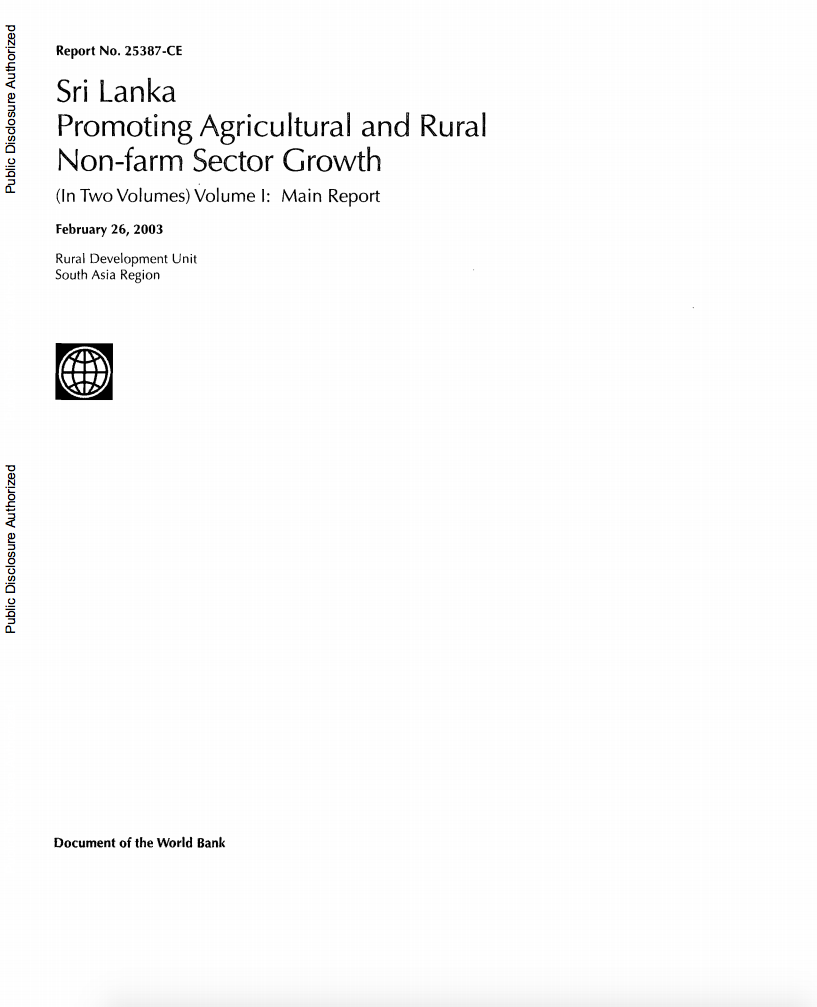The World Bank is a vital source of financial and technical assistance to developing countries around the world. We are not a bank in the ordinary sense but a unique partnership to reduce poverty and support development. The World Bank Group has two ambitious goals: End extreme poverty within a generation and boost shared prosperity.
- To end extreme poverty, the Bank's goal is to decrease the percentage of people living on less than $1.25 a day to no more than 3% by 2030.
- To promote shared prosperity, the goal is to promote income growth of the bottom 40% of the population in each country.
The World Bank Group comprises five institutions managed by their member countries.
The World Bank Group and Land: Working to protect the rights of existing land users and to help secure benefits for smallholder farmers
The World Bank (IBRD and IDA) interacts primarily with governments to increase agricultural productivity, strengthen land tenure policies and improve land governance. More than 90% of the World Bank’s agriculture portfolio focuses on the productivity and access to markets by small holder farmers. Ten percent of our projects focus on the governance of land tenure.
Similarly, investments by the International Finance Corporation (IFC), the World Bank Group’s private sector arm, including those in larger scale enterprises, overwhelmingly support smallholder farmers through improved access to finance, inputs and markets, and as direct suppliers. IFC invests in environmentally and socially sustainable private enterprises in all parts of the value chain (inputs such as irrigation and fertilizers, primary production, processing, transport and storage, traders, and risk management facilities including weather/crop insurance, warehouse financing, etc
For more information, visit the World Bank Group and land and food security (https://www.worldbank.org/en/topic/agriculture/brief/land-and-food-security1
Resources
Displaying 2281 - 2285 of 4907
Uruguay : The Rural Sector and Natural Resources,
Volume 1. Main Report
The report reviews the macroeconomic
perspectives of Uruguay, focused on its rural development
and natural resources intensive sectors, to form the basis
for expanding agricultural production, and increasing
productivity. It reviews the country's sectoral
composition, exports of natural resource intensive products,
and labor and capital use, as well as the tax burden.
Although agriculture represents less than ten percent of the
Lao PDR - Production Forestry Policy : Status and Issues for Dialogue, Volume 1. Main Report
Forestry contributes 7-10 percent of Lao
Gross Domestic Product (GDP) and 15-20 percent of
non-agricultural GDP. In rural areas forest exploitation is
one of the few available economic activities, and non-timber
products provide more than half of family income. The sector
contributes 34 percent of total export value, and even more
of net foreign exchange. Forestry royalties as a share of
government revenues have decreased from 20 percent in the
Brazil - Poverty Reduction, Growth, and Fiscal Stability in the State of Ceara : A State Economic Memorandum, Volume 2. Annexes
Although the State of Ceara, in Brazil,
is a model of good economic, and fiscal performance given
its poverty status, recent analysis show poverty remains
severe, in spite of significant reductions over the last
decade. The combination of good governance, and sound fiscal
management, industrial promotion, and public investments
have been successful, but the report questions whether
different policies, could have led to higher growth, and
Measuring and Apportioning Rents from Hydroelectric Power Developments
This paper deals with economic rents
arising from the development of hydroelectric generation on
international watercourses. The paper briefly defines the
concept of economic rent and its application to
hydroelectric developments. It explores two areas of
precedents that shows how the concept could be applied in
developments on international watercourses. First, it looks
at international law on the ownership and rights of use of
Sri Lanka : Promoting Agricultural and Rural Non-farm Sector Growth, Volume 1. Main Report
Economic development has brought about,
the decline in contribution of the agricultural sector to
the economy of Sri Lanka, and, consistent with this economic
transformation, the structure of employment also changed.
Thus, as labor migrates away from agriculture, the
productivity, for those who remain in the land, needs to
increase significantly. This report examines the constraints
to promoting more rapid agricultural, and rural non-farm







